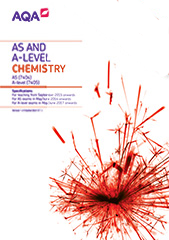3.3.6 Organic analysis
Our understanding of organic molecules, their structure and the way they react, has been enhanced by organic analysis. This section considers some of the analytical techniques used by chemists, including test-tube reactions and spectroscopic techniques.
Identification of functional groups by test-tube reactions
Content |
Opportunities for skills development |
|---|---|
The reactions of functional groups listed in the specification. Students should be able to:
|
AT b, d and k PS 2.2, 2.3 and 4.1Students could carry out test-tube reactions in the specification to distinguish alcohols, aldehydes, alkenes and carboxylic acids. |
|
Required practical 6 Tests for alcohol, aldehyde, alkene and carboxylic acid. |
Mass spectrometry
Content |
Opportunities for skills development |
|---|---|
Mass spectrometry can be used to determine the molecular formula of a compound. Students should be able to:
|
Infrared spectroscopy
Content |
Opportunities for skills development |
|---|---|
Bonds in a molecule absorb infrared radiation at characteristic wavenumbers. ‘Fingerprinting’ allows identification of a molecule by comparison of spectra. Students should be able to:
The link between absorption of infrared radiation by bonds in CO2, methane and water vapour and global warming. |
Students should be able to use data in the Chemistry Data Sheet or Booklet to suggest possible structures for molecules. |
